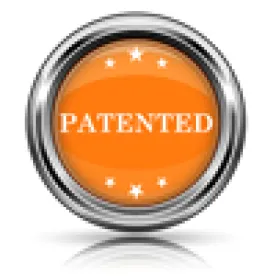Litigation involving standard-essential patents (“SEPs”) is on the rise. The now longstanding and disturbing impact of efficient infringement by recalcitrant implementers is the predominant cause of the increase. As many patent licensing professionals have observed, would-be licensees appear increasingly unwilling to come to the negotiating table, despite acknowledging that they implement the standard(s) to which the SEPs are essential.
There is a broad perception amongst implementers of standard-essential technology that the worst that can happen to an unwilling licensee—found to infringe a valid SEP—is that it pay the same fair, reasonable and nondiscriminatory (“FRAND”) rate it would have had to pay if it had agreed to take a license in the first instance. Accordingly, implementers often seek to exhaust all legal defenses to taking an SEP license before, reluctantly, taking one. This is efficient infringement, and, in an attempt to quell this movement, SEP owners are forced to intelligently assert their SEPs to have any chance of licensing them.
Due to the uptick in litigation, a considerable body of domestic and international law has developed around SEP enforcement. Quantity, however, does not ensure predictability, and the legal outcomes have been inconsistent. Jurisprudence and statutes governing, for example, how injunctions are granted, how damages are calculated, and how FRAND royalty rates are determined, differ from country to country, and, in some cases, internally within one jurisdiction. This patchwork approach to FRAND has complicated the efforts of SEP owners to effectively navigate international legal systems, and has further emboldened implementers to engage in efficient infringement. In a world where asserting SEPs in a single jurisdiction is insufficient to drive a global licensing agreement, and navigating the legal systems of multiple international jurisdictions is overwhelmingly confusing, SEP owners face an uphill battle when attempting to license their SEPs.
Not all hope is lost though. Despite the confusing nature of SEPs, a roadmap to fair compensation for SEP patent holders exists. Awareness of jurisprudence can generate successful litigation outcomes that will provide meaningful licensing leverage. This analysis must focus on key business markets and how the legal systems in those markets address SEP-related disputes. Specific considerations include the availability of injunctive relief and the scope of available FRAND royalties that each jurisdiction affords. Currently, a multi-jurisdictional enforcement approach that combines United States (US), European, and Asian proceedings will likely provide SEP owners with maximum leverage to bring implementers to the negotiating table. These venues present meaningful legal leverage to SEP owners. In the US International Trade Commission (“ITC”), Netlist recently demonstrated that SK hynix infringed one of its SEPs resulting in a Section 337 violation, the first time such a feat had been accomplished since 2013. In Europe, appellate decisions in the United Kingdom (UK) have confirmed that SEP owners can be awarded a global FRAND rate and a FRAND injunction for successful assertion of their SEPs. For Asia, exposing the Chinese market to an adverse legal decision involving SEPs may be enough reason to consider it as a venue for assertion. The remainder of this article explores the significant considerations that SEP owners must account for in US courts when crafting a licensing strategy.
The ITC is a popular forum due to its short time to resolution, immunization from inter partes review, and the threat of injunctive relief. A concern for SEP owners, however, has been whether injunctive relief is realistically available at the ITC. This anxiety stems from Investigation No. 337-TA-794 where, despite the ITC granting injunctive relief with respect to an SEP, the U.S. Trade Representative vetoed the order based on “policy considerations,” which were related to the “competitive conditions in the U.S. economy.” The Trade Representative’s intervention was extraordinary and is well-understood to have been prompted by the specific and peculiar facts and circumstances of that investigation. Intervention by the Trace Representative will remain an extremely rare occurrence. So, can the ITC’s issuance of an exclusion order provide effective injunctive relief to SEP owners? The answer is “yes.” In determinations that post-date the 794 Investigation, Administrative Law Judges (“ALJs”) have stated, albeit in dicta, that the forum shall not be a safe haven for a respondent that is accused of infringing SEPs. Most recently, the Chief ALJ recommended a limited exclusion order against a respondent found to have violated Section 337 by infringing a valid SEP. Obviously, the ability to enjoin a company from the U.S. market provides an SEP owner with a useful mechanism to bring unwilling licensees to the negotiation table.
Federal district courts have also demonstrated a willingness to determine and set domestic and international FRAND rates. In TCL v. Ericsson, Judge Selna set a (1) US, (2) European, and (3) “Rest of the World” FRAND rate for Ericsson’s global SEP portfolio. This decision shows that US courts will set extra-territorial FRAND rates for international SEP portfolios in addition to domestic rates. Providing SEP owners with a one-stop-shop for the determination of FRAND rate—as opposed to litigating in every jurisdiction in which the entity owns SEPs—is a tremendous benefit.
However, even with the availability of injunctions and extra-territorial FRAND rates, a series of US Supreme Court decisions have made it difficult for SEP owners to actually obtain redress for efficient infringement:
- making injunctions much more difficult to obtain (eBay v. MercExchange);
- making licensors more vulnerable to declaratory judgment actions (MedImmune v. Genentech);
- making patents more vulnerable to obviousness and indefiniteness challenges (KSR v Teleflex and Nautilus v. Biosig);
- broadening the scope of patent exhaustion (Quanta v. LG Electronics); and
- narrowing the scope of patent eligibility, especially with regard to software (Alice v. CLS Bank).
As a result, single jurisdiction enforcement—even in the US—is no longer a sufficient response to efficient infringement, and is unlikely to result in a global licensing agreement. Prudent SEP owners must, therefore, consider a multi-pronged enforcement approach that includes jurisdictions in the US, Europe and Asia. Although there are jurisdiction-specific challenges in enforcing SEPs, recent domestic and international decisions suggest the playing field is evolving in a positive way for SEP owners. A roadmap to successful SEP licensing exists. Accordingly, SEPs remain a vital source of value that can serve as a compelling component of a comprehensive patent licensing strategy. Continued observation of domestic and international legal issues is, of course, important as numerous decisions in multiple jurisdictions are scheduled to issue over the next year, all of which may shape the licensing strategy of SEP owners. However, SEP owners should feel increasingly confident that they can effectively navigate domestic and international venues to convert legal victories into successful SEP licensing.






 />i
/>i

